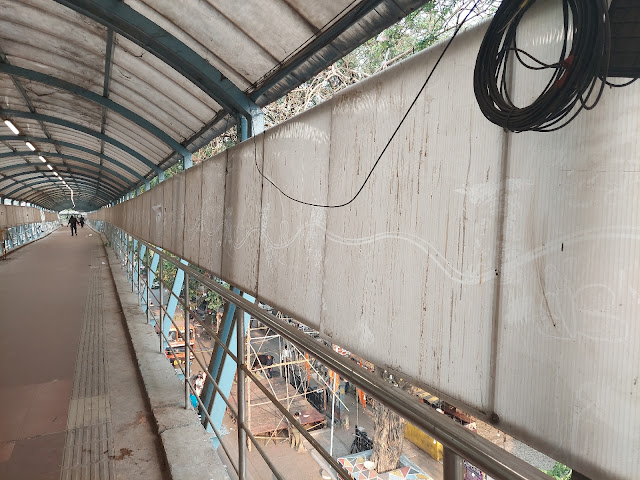
Sunday, April 30, 2023
Amol Patil at Project88

Sunday, April 09, 2023
Wednesday, April 05, 2023
Tuesday, March 21, 2023
Badal Mahal: Chanderi
This completely trippy hybrid gate was made as an entrance gateway to Chanderi Fort. Known as Badal Mahal Gate, the bounded complex has a few different parts including an enclosed garden, a stepwell, a fort wall, a dilapidated pavilion and finally an ornate gate. through which one approaches the main fort uphill.
Apart from all other things, what particularly impressed me is the sensuous staircases aligned along the double skinned bounding wall. These snaking staircases turning softly with the folds of the wall release into the enclosed garden. Sometimes, two staircases face each other in a manner of establishing dialogue with each other. They release the user to a door that leads one into the space between the hollow thickness of the wall. (Such articulation of the wall and carving of space within its thickness can be seen in most fort buildings across the world - and I remain particularly fascinated with the the constraint and craft of space within such situations). The space between the walls connects different parts of the complex, and is a defense feature.
The symbolic ornate gate is held between two tapering minarets that have foliated pointed arches and false windows that frame the hill behind. It seems like a mixture of many influences. A similar gate can be found (unkept) within the inner city too, taken over by wilderness and parking.
The stepwell is neatly levelled with the ground and almost like an inverted building that has several levels to cross across. It is a beautifully crafted container inside the earth with doors, windows and passages that becomes operable and accessible when not filled with water.
The last two photographs here are the mausoleums of the saints exhibiting exquisite jali works.

Friday, March 17, 2023
The Ephemeral Skywalk Museum
"Every day hundreds of strangers reach out to other strangers on the strength of a glance, a smile or a blue hat. Their messages have the lifespan of a butterfly. I’m trying to pin a few of them down.”
























































